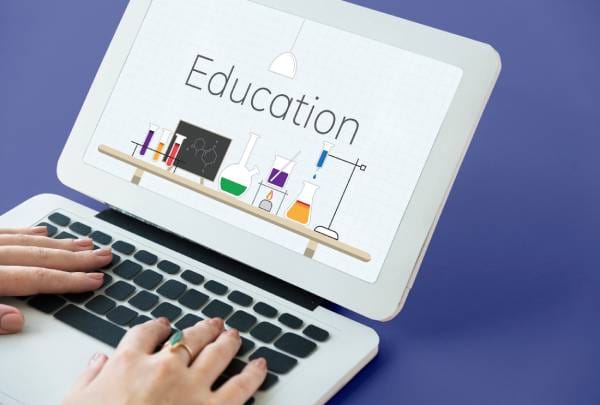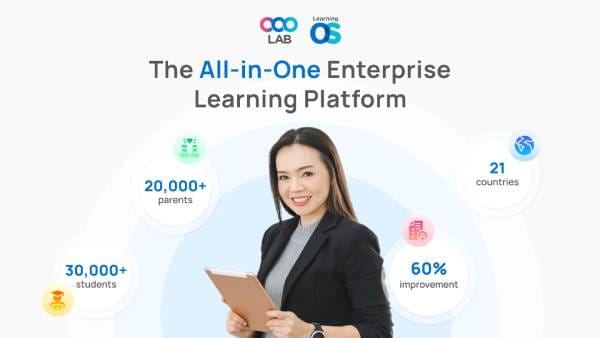As the desire for contemporary and tailored education increases, staying updated on students' progress and enhancing their learning skills through conventional teaching methods has become challenging. Aligning educators' understanding with that of their students has become increasingly difficult. Despite ongoing attempts to enhance teaching methods, it's impractical to closely monitor each student and provide individualized attention to those in need.

The constraints of traditional teaching methods in meeting these changing expectations have diminished the significance of discovering inventive solutions that connect traditional and contemporary educational approaches. Presently, both parents and students are increasingly searching for an educational setting that provides enriched learning experiences, ongoing progress monitoring, and interactive participation. Within this framework, Learning Management Systems (LMSs) have surfaced as platforms that empower educational institutions to revolutionize their teaching techniques and adjust to the demands of modern learners. Therefore, with the right LMS implementation, enrichment centers can skyrocket student success.
Contents
I. What is LMS for an enrichment center?
A Learning Management System (LMS) is a software utilized by educational institutions to enrich, oversee, and strategize the learning journey for students. It streamlines online learning and allows for measurable progress monitoring. An educational LMS provides a range of features tailored specifically for academic purposes, such as:

1. Course creation
Instructors can create courses by uploading content, timeline and assigning assignments.
2. Online assessments
Instructors can generate numerous online tests and assessments without the need for manual grading. An educational LMS automates the assessment procedure, assigning grades to students automatically.
3. Dashboard
Learning Management Systems (LMSs) offer personalized dashboards for both instructors and students. Students can monitor and analyze their academic development, along with reviewing their performance in particular assessments via their dashboards. Instructors can evaluate their students' progress by utilizing the dashboard.
4. Virtual classrooms
Virtual learning environments empower educators to structure online classrooms and distribute course materials to students. This grants students the flexibility to access course content at their convenience while upholding a collaborative learning atmosphere.
II. How can LMS help
The importance of LMS is inevitable. Therefore, LMS has become so popular in the education industry. Let's find out how enrichment centers can utilize LMS to enhance student performance and productivity. Here are some examples:
1. Blended learning
Blended learning merges online education with traditional classroom methods, enhancing the overall learning system and providing extra advantages. It boosts student productivity, rendering the learning process more captivating compared to conventional approaches. Additionally, it enables students to engage in online study, offering flexibility and convenience.
>>> Read more: How can an LMS automate my learning operation
>>> Read more: How can an LMS encourage students to return to the classroom
>>> Read more: Self-Paced Learning: Empowering Employees to Upskill at Their Own Speed
2. Gamification
Gamification is such a great tool to create quizzes, challenges and interactive videos which enhance students engagement and interaction. LearningOS gamification tool helps to customize digital currency as well. Students are able to choose from coins, stars, or gold and allocate upon completion of activities, homework, and assessments.
>>> Read more: The features and benefits of LMS gamification
3. Analytics
Analytics within Learning Management Systems (LMS) refer to the tools and capabilities that allow educators and administrators to gather, analyze, and interpret data related to student engagement, performance, and learning outcomes.
4. Increasing productivity
Embracing a fresh teaching approach and acquainting oneself with the accompanying software and features can pose challenges. Ensuring the seamless integration of a Learning Management System (LMS) hinges on selecting a platform that is intuitive and user-friendly. The LMS should cater to students across all age groups and be effortless for educators to navigate. Conducting workshops to educate students, parents, and teachers about the LMS's functionalities, advantages, and its role in achieving educational objectives is imperative.
Adhering to these considerations is essential to unlock the full potential of the LMS and foster a conducive educational environment for both instructors and students.
III. Benefits of utilizing LMS for enrichment centers
Here is the list of benefits of LMS that makes LMS different from traditional way of learning and teaching
1. Course availability
In traditional teaching, not all students have access to comprehensive course materials in a centralized location, and neither students nor educators can tailor learning paths on an individual basis. Conversely, with an LMS, you have the flexibility to organize and store content as desired. Through an LMS, students gain access to the entire curriculum in one location, and instructors can customize learning paths for each student individually.
2. Communication board
With Student portal and Instructor portal, an LMS provides both educators and students with a platform for open discussions. Through discussion forums, students can pose questions via chat, which can be answered by the educator and fellow students. These forums are accessible to everyone and can be revisited at any time for reference on the same topic.
3. Reporting to parents
An LMS offers instructors the flexibility to review a student's profile and utilize analytics to assess their performance and identify areas for improvement. Instructors can tailor distinct learning paths for individual students and provide timely performance reports to parents, a task that is nearly unfeasible through traditional teaching methods. Additionally, parents have access to their child's profile, allowing them to monitor their performance whenever they wish.
4. Performance analytics
Tracking the performance of every student poses a challenge for educators. However, an LMS facilitates the identification and support of low-performing students, offering them the chance to enhance their performance.
>>> Read more: 4 learning statistics that tell your students need support
IV. Different types of LMS for education
1. Saas LMS ( Cloud- based)
Users can effortlessly set up and deploy the SaaS LMS and upload content to prepare it for students. Numerous educational institutions choose SaaS LMSs for their simplicity in usage and administration.
2. Installed LMS
For institutions placing a premium on security, an installed LMS presents an optimal solution. Data can be stored on the institution's server, affording users the option to leverage their current server infrastructure or develop a bespoke LMS tailored to the institution's requirements.
3. Open-source LMS
Open-source LMS software is freely available for everyone to use. This option is suitable for institutions that want to create a custom LMS without starting from scratch.
4. Custom-built LMS
A bespoke LMS is crafted for educational institutions with significant financial resources and a precise vision of their desired LMS appearance and functionality. It can be created by an internal team or contracted out to a development team.
>>> Read more: Fast track your enterprise LMS implementation in 12 steps
Customize and utilize your LMS today

V. Conclusion
This article explores the impact of Learning Management Systems (LMSs) on reshaping education, highlighting their capacity to improve learning experiences and results. It outlines the advantages of integrating an LMS in educational settings, such as easy access to course materials, fostering collaborative learning via discussion forums, efficient communication with parents, and utilizing performance analytics to monitor individual progress.
About us
At OOOLAB (pronounced 'uːlæb'), our mission is to make complex learning operations simple. We aim to positively impact the lives of over 1,000,000 learners and educators by the end of 2026.
OOOLAB's LearningOS provides educational institutions and corporate enterprises with an all-in-one solution to create and deliver engaging learning experiences.
Reach out to us at: Linkedin, FaceBook


